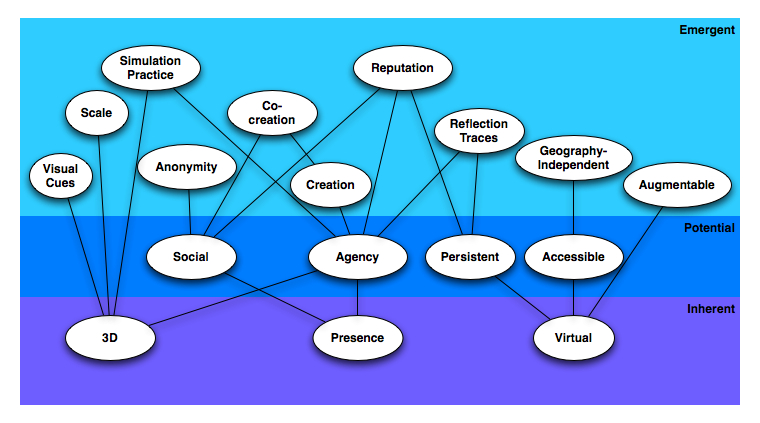In some client work I’m doing, I’m helping out an effort to establish a Web 2.0, social, informal, [enter your own bizbuzz phrase here] strategy. Despite the hype, this looks to be a real value proposition for them. They’ve serious needs in terms of deep knowledge retiring, acquisitions to integrate into a streamlined operation, and more.
As a consequence, I’ve been talking to folks within this large organization who are embarked on various social media efforts. Some are instituted from different organizations, like under the CIO, and others have emerged from the learning function with the organization. The interesting thing is how the actions are blurring the notion that there are tight boundaries between formal and informal.
In two separate cases, the solution emerged as a realization that the ability of the learning organization to continue to meet the growing rate of change (both in the rate of changes, and the increasing complexity), is not keeping up with the need. There’s also a recognition that empowering the users to take control is a real opportunity. In one case, they’re rolling out a wiki that they’re initially populating, but are already in the process of devolving access and the ability to contribute. In another, they’re making accessible the resources for users to choose what to film or software activity to capture, to make their own little ‘learnlets’ and make available.
Is this performance support? Is this formal learning? Is this social or informal learning? It doesn’t matter! What matters is that these are areas where the learning function can and should contribute! However, it’s blurring the line between control of learning design, responsibility for curriculum, and more. And this isn’t an abrogation of responsibility, but instead a necessary extension of the learning function scope, on principle, and a pragmatic response to a changing world.
There was a separate instance where the KM group was developing a wiki for similar needs, e.g. the growing body of knowledge. However, there were two reasons why they could benefit from the learning function as well. For one, they’re focusing on developing rich semantic underpinnings that will facilitate smart search and rule-driven complex behaviors (read: opportunistic and customized information). This is great and important work (I love this stuff, it’s Web 3.0), but they won’t actually be putting in useful information for another year! There’s an immediate need that needs to be addressed here. The second one comes from when they are ready to move forward; they’ll benefit from the learning function’s experience in both gathering knowledge and in supporting rolling out access to the learners themselves.
There was also a definite recognition that the proliferation of resources was a problem to make accessible, and to govern the lifecycle of, and to message the updates. These are clearly central roles, and require an understanding of learning. And more. I’ve argued that learning designers need to understand information architecture and information design as well, and this only reinforces that message, but, those fields share much foundational knowledge and the extension isn’t onerous.
The bigger picture is to go beyond the individual initiatives, figure out ways to scale the approaches enterprise-wide, to make the breadth of resources systematically organized, and to remove redundancies and inefficiencies. By coordinating the technical sophistication of the Information Services group with the learning function (and other strategic alliances), this organization has a real opportunity to tap into the collective intelligence of it’s employees, and get a handle on the continuous innovation that will be required in the increasingly competitive market. But it only happens by some systematic work to streamline the effort, otherwise there will still be bottlenecks to effectiveness and redundancies to hamper efficiency.
There’s still a role for formal at one end, and I haven’t really exposed the alternative mechanisms supporting the far end of collaboration, but here I wanted to focus on the gray area in the middle and the necessity of not trying to artificially create a boundary.
 I start with what I think are the core affordances of virtual worlds, that there’s a 3D world, that you can visit, and that’s digital. From there, I see that you can enable others to be there (social), you can enable action (agency), the world can be kept around (persistent), and it can be made accessible broadly (e.g. through the internet).
I start with what I think are the core affordances of virtual worlds, that there’s a 3D world, that you can visit, and that’s digital. From there, I see that you can enable others to be there (social), you can enable action (agency), the world can be kept around (persistent), and it can be made accessible broadly (e.g. through the internet).